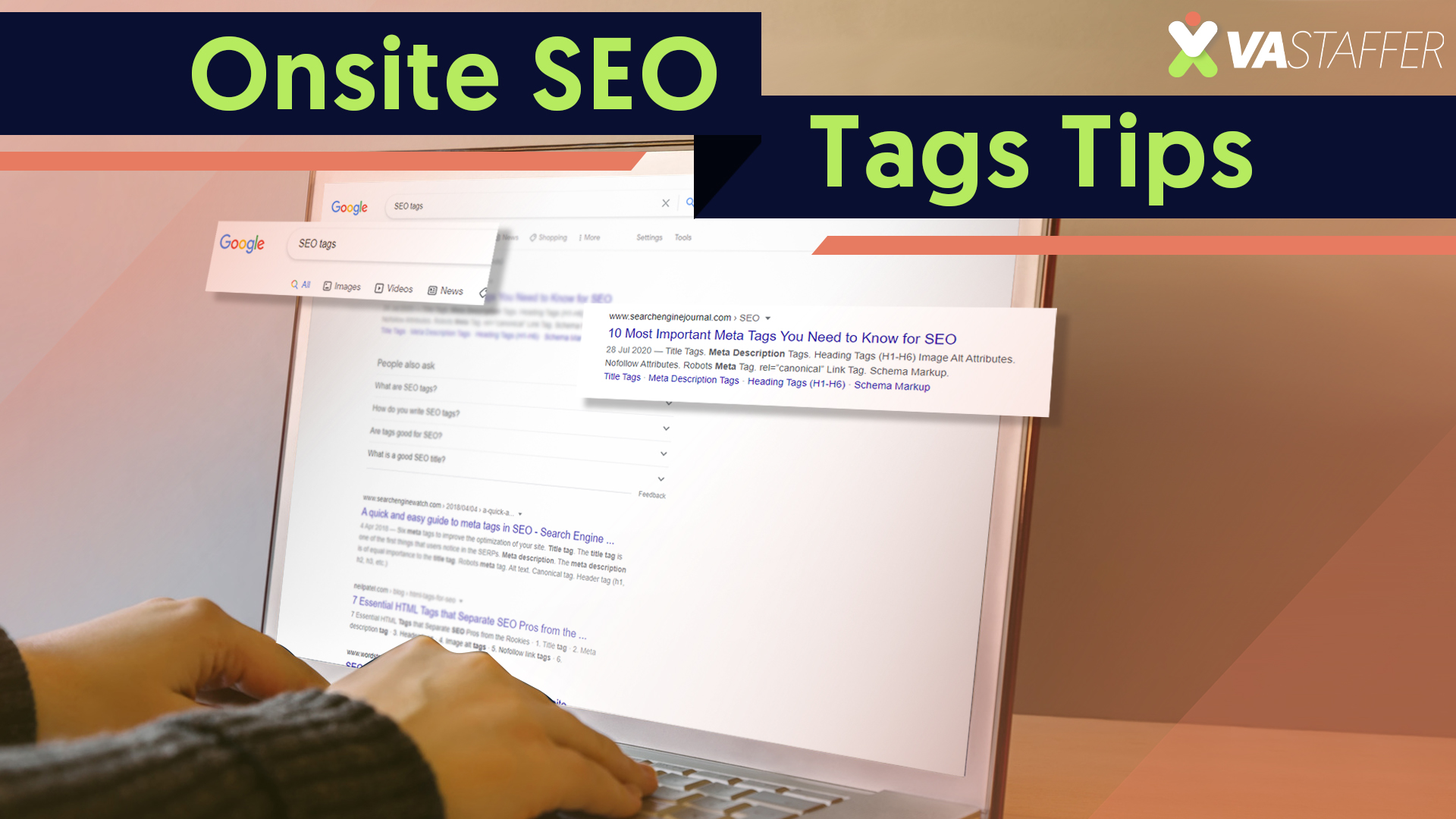
SEO tags are organizing factors for the content of various pages or posts. This is a little bit different than linking phrases as these tags are not part of the meat of the content. Blog tags tend to be at the end of the content for each post, and they are meant for people to find related content to that specific tag.
A huge part of the keyword strategy involves brainstorming the kind of tags that you are going to have on your site. This can be difficult to do, but narrow your tag results down to the 20 most descriptive tags.
Working on tags is part of this Onsite SEO Step By Step series that tries to go over the necessary factors to keep in mind while working on the optimization of the site.
What Is A Blog Tag?
Blog tags are the links at the bottom of a page or a post that is part of the user experience. Too many websites do not strategize their blog tags when building the content, and end up with a messy tag profile.
Also, page and post writers to to tag everything possible in the content. The only reason to have that much fine-grain in a blog tagging system is if you are organizing large groups of pictures or videos.
The blog tag should be written in the same case (usually Title or Camel Case) in order to ensure uniformity for the user experience. This just means that if your blog looks amateurish, the users might leave the page early creating a high bounce rate.
From other articles in this series, you should have learned that bounce backs cause harm to the rankings of the whole site.
How To Tag Your Blog
There are a lot of benefits to including a tag cloud on your blog specifically. This allows for the users to get a good feel for what is available to them on the site. Keyword strategy takes some thought here. You want to use keywords that do have a lot of competition as these would be the highest level words to describe a particular niche.
The thing that most SEO professionals do not tell their customers is that duplicate content hurts the overall rankings of the site. Duplicate content happens when keywords are matched too closely to the tags on a site. If you have a sizable blog, it is recommended to hire a virtual assistant team to find and remove duplicate content from your site.
If your chosen primary keyword also shows up as the exact tag for a group of content pages, this raises the possibility for a manual review of your site. So, with all of that in mind, brainstorming proper keyword mapping for the purpose of user experience should be performed, as well.
Blog Tags SEO Tricks
It is a good idea to learn some tricks that relate to search engine optimization and tags. A few important rules:
- Do not make your tags complicated.
- Use high-level keywords for your tags.
- Avoid using a person’s name unless it is for branding purposes.
- Do not have more than 5 tags per post.
- Do not use the name f the website as a tag – ever!
For local searches, it is best to use tags that are based off of areas of your city or the names of the city neighborhoods.
For example, in Portland, Oregon, Steve Jobs attended college in the Reed Neighborhood. If I had a website out organic shops, making a “Reed” tag would help my users find the shops closest to them. (On a side note, Reed College is where you can actually study “underwater basket weaving” if you so chose to do so. I had always heard that as a class offering, and I thought it was a joke. Now, you know, too.)
Do Not Follow Me!
One of the biggest reasons that you do not want to use your rich primary keywords as tags is that is causes duplicate content for search engines. Duplicate content is a bad thing for your entire website. The search engines will give the copy with the most weight behind it all the traffic. This is a huge mess with the hummingbird update, which essentially triggers a manual evaluation by Google employees. The best way to deal with duplicate content is to de-index your tag archives with no-follow links. (You should do the same with SEO categories archives, too.)
Tags For Blogs Should Be Precise
One of the tactical things to manage blog tag clouds is to understand the difference between precise and accurate. If I held up a rose, it could be accurate to say that it is organic life, it is a symbol of romance, it has oils that act as an insect repellent, and the darker the rose, the bitter the flavor. Accurate statements are facts, in general.
However, with tag clouds you want to be precise. Making a tag called “rose” and another tag called “flower” is more precise. By fine-tuning precise tags with high-level tags, you’ll have a cleaner tag cloud. This may require some keyword strategy and brainstorming to make this all work. If you have more than 25 tags in your tag cloud, you need to go more high-level!
This Article Is Officially Blog Tagged
As you can see, tags for pages or blogs is very important. Contrary to belief, tags do not affect SEO directly. Rather, tags are used to control the user-experience. With this in mind, it makes sense to limit the number of tags to the most important topics within the tag cloud.
If you look at a tag cloud and there are a lot of long tail tags, then your tag system needs some re-planning. The best part is that since the tags are tied to specific posts, it makes it easy to find and renovate the rogue tags throughout the site.
What strategies would you implement to keep your tag cloud precise? Please comment below.


